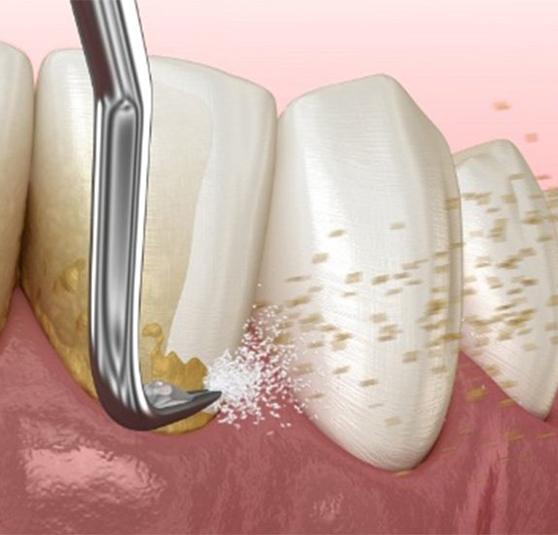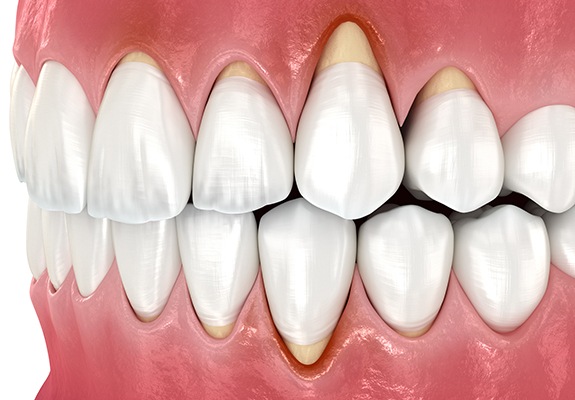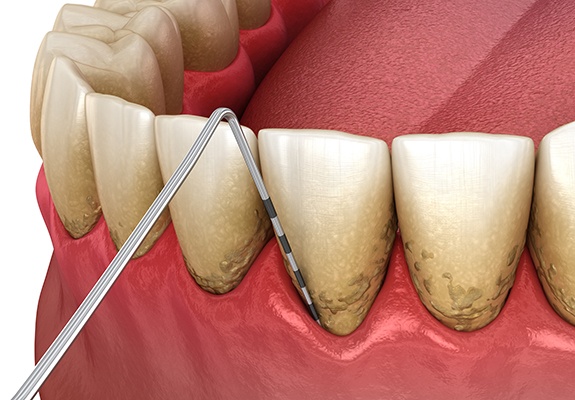Gum Disease Treatment – Revere, MA
Helping You Manage Your Gum Health

We often focus on keeping our teeth healthy, but did you know that your gums need just as much attention? Bleeding, swelling, or redness around your gums can be signs of gum disease, something that affects over half of adults in the U.S. It’s easy to overlook, but when left untreated, it can lead to more serious issues down the road, like periodontitis.
At Page Family Dental, we’re here to help prevent gum disease from becoming a bigger problem. If you notice any signs, don’t wait! Our team can help target those trouble areas and work with you on keeping your gums healthy so you can enjoy a smile that lasts a lifetime.
Give us a call today and let’s chat about simple steps to care for your gums and keep your smile feeling great!
Why Choose Page Family Dental for Gum Disease Treatment?
-
 Saturday Dental Appointments Available
Saturday Dental Appointments Available -
 Enhanced Digital Imaging for More Precise Diagnosis & Treatment
Enhanced Digital Imaging for More Precise Diagnosis & Treatment -
 We Will Maximize Your Available Dental Insurance Benefits
We Will Maximize Your Available Dental Insurance Benefits
What is Gum Disease?

Gum disease is an oral health problem that forms when bad bacteria infect the teeth and gums, resulting in bleeding, inflammation, tenderness, and redness. Although initial symptoms can be reversed (gingivitis), allowing the infection to worsen will only lead to more serious oral and overall health problems, such as tooth and bone loss as well as cardiovascular disease, cognitive decline, and more.
Gum disease does not discriminate. Although it is more commonly found in older individuals, it can affect people of all ages.
Periodontal Disease & Whole-Body Connection

When gum disease develops, it’s not just the mouth that is affected. The body is as well. Researchers have found a connection between oral and overall health, so if a problem forms inside your mouth, there is a good chance it will also manifest in various ways throughout your body.
For instance, gum disease has been commonly linked to diabetes, cardiovascular disease, negative cognitive decline (i.e., dementia, Alzheimer’s), and more.
By addressing your gum disease, we can also help lower your risk of costly and timely treatment that relates to your overall health.
Symptoms of Gum Disease

Some of the most common symptoms that can occur should gum disease exist include:
- Gum tissue redness
- Halitosis or bad breath
- Gum recession (teeth appear longer than before)
- Gum tenderness
- Difficulty or pain while chewing
- Loose teeth
- Increased tooth sensitivity
- Changes in your bite pattern
- Tooth loss and bone loss
How Do We Treat Gum Disease?

When treating gum disease, it’s important that we first identify the area in question as well as how severe it is. This will determine our approach and/or recommendation for treatment.
Scaling and Root Planing

The most common method of gum disease treatment is scaling and root planing. This process requires two parts. First, we will begin by scaling your pearly whites and removing any hardened plaque and tartar from the surfaces of your teeth as well as below the gumline. When we are finished, we’ll move on to the next phase, which is root planing. This involves gently reshaping and smoothing out the roots of your teeth. Doing so will minimize the chances of reinfection and promote healthy gum reattachment.
Do You Need Scaling & Root Planing?

You will only be recommended for this type of treatment if the infection has spread, is causing gum pockets to form, and is progressing to a more advanced stage. When evaluating your mouth, you can expect our team to suggest scaling and root planing if:
- Your gums bleed when brushing or flossing
- Your gums are receding
- You have persistent bad breath or halitosis
- You have a bad taste in your mouth
- Your teeth appear to shift or feel loose
- You have trouble chewing
- You have excessive plaque buildup around your teeth and gumline
The Process of Scaling & Root Planing

Scaling and root planing is a two-part process. The first stage is to perform what is known as scaling, which requires using specialized instruments to remove accumulated plaque and tartar from your teeth and around the gumline (above and below). The second stage is root planing, which involves reaching deep within the gum pockets to begin smoothing out the tooth roots. This process not only encourages proper gum healing but also reattachment to teeth.
The smoothing and reshaping of your tooth roots also discourage bacteria from building up again in the future.
Aftercare Tips for Scaling & Root Planing

After we are finished with scaling and root planing, you will need to make sure you take proper care of your smile. Generally, you will receive local anesthesia before the treatment begins, as this requires working underneath the gumline. Since it will take time for the anesthesia to wear off, you’ll need to wait to eat anything until you are no longer numb. This may take a few hours.
Your gums may be sore after treatment, so make sure to rinse with warm salt water every few hours. This not only helps reduce discomfort but also encourages faster healing. You’ll need to continue brushing your teeth, but you’ll want to be mindful of the amount of pressure you use when approaching the treated portions of your gums.
